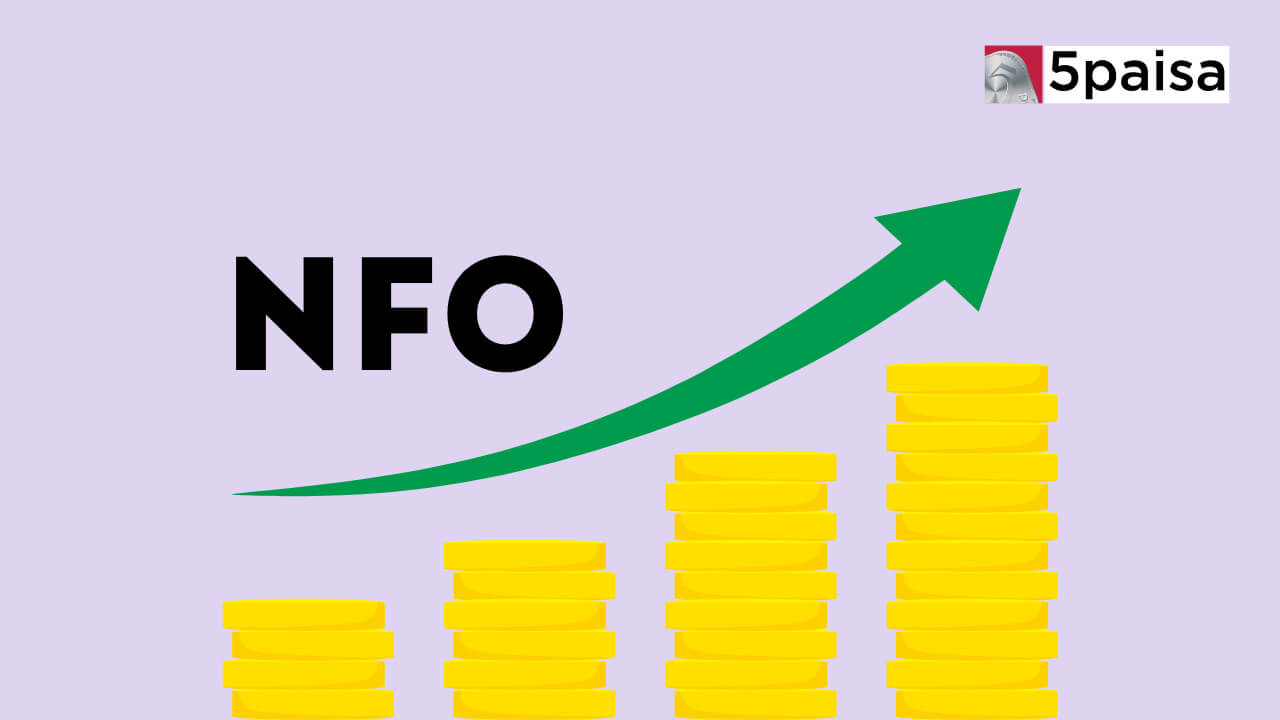Best Long-Term Bond Funds

Last Updated: 29th May 2023 - 08:03 am
People often have different requirements they need to meet at different stages of life. And India’s mutual fund industry has created a vast range of investment products to help people meet those requirements. These products include schemes that invest in stocks, bonds or both, and should be chosen based on several factors such as the time period of the investment, how much risk one can take and how much return do they expect.
Typically, as the saying goes, investors shouldn’t put all their eggs in one basket. This basically means they should invest both in equity and debt, and decide on an asset allocation strategy that best suits their requirements.
So, people with relatively high return expectations, high risk appetite and a long holding period can consider investing mostly in equity schemes, and a smaller portion of their wealth in debt. On the other hand, people who have a conservative outlook and who are risk-averse can consider investing a larger portion of their money in debt mutual funds.
Within the debt mutual fund arena, there are schemes that allow investors to park their money safely for a few months and there are schemes that allow investors to invest their money in safe instruments for a decade or more. Long-term bond funds are among such schemes that investors can use for their long-term requirements. Let’s take a detailed look at long-term bond funds, their features and their advantages and disadvantages, and then check out some of the top long-term bond funds available in the market.
Overview of Long-Term Bond Funds
For people looking to invest in debt mutual funds in India, there are more than a dozen categories to choose from depending on the expected holding period, investment strategies and other factors.
Investors who want to invest their money for the long term, typically 10 years or more, can invest in gilt debt funds, which invest mainly in government securities, and long-duration debt funds, which can invest both in corporate bonds and G-secs.
Long-duration debt funds or long-term bond funds are schemes that invest in fixed-income securities with maturities ranging from 10 years to 30 years. To be specific, long-duration debt funds are open-ended schemes that invest in debt securities such that the Macaulay duration of the portfolio is greater than seven years. This essentially means that the weighted average term to maturity of the cash flows generated from the portfolio is more than seven years.
These schemes intend to generate higher yields than short-term or medium-term bond funds. The long-term bond funds aim to preserve capital over a long period of time and offer steady income. Since long-term bond funds invest in securities with long maturity dates, these schemes have relatively high interest rate risk and relatively low credit risk compared with other schemes.
Top Long-Term Bond Funds 2023
There are only a handful of long duration debt funds in India as the product hasn’t gained much popularity. This could be mainly because most debt fund investors prefer to put their money in schemes for short to medium terms, ranging from a few weeks and months to a few years at most.
However, with growing awareness of the need to manage personal finances, investors are increasingly seeking to invest in debt funds for their long-term goals that are 10-30 years away, such as children’s college education, children’s wedding and their own retirement.
Investors looking for long-duration debt funds have only seven schemes to choose from if they are looking at direct plans. Let’s take a look at each of these schemes and see which ones are the best long-term bond funds.
ICICI Prudential Long-Term Bond Fund: This is the oldest long-term bond fund in India and has been operating for slightly more than 10 years. The scheme has assets under management of Rs 651 crore.
The direct plan of this long-term bond fund has generated a one-year return of 9.15%, five-year annualized return of 7.78% and ten-year annualized return of 7.66%.
As is evident, this fund has generated consistent returns over the years. This makes it one of the best long-term bond funds for investors looking to preserve their capital and create a stable income stream.
Nippon India Nivesh Lakshya Fund: This long-term bond fund is almost five-years old and is the biggest fund in the category of long-duration debt funds with assets under management of Rs 6,164 crore. As its AUM reflects, this is among the top long-term bond funds in India.
The direct plan of this long-term bond fund has generated a one-year return of 12.3% and three-year annualized return of 5.25%. It recorded its best performance between mid-July 2018 and mid-July 2019, when it clocked a return of 25.9%.
HDFC Long Duration Debt Fund: This scheme is only four months old but has quickly emerged as one of the top long-term bond funds. The fund has assets under management of Rs 1,218 crore, making it the second-largest in the category of long-duration debt funds. The fund has generated three-month returns of about 4.8%.
The scheme plans to invest in government securities with residual maturity of more than 30 years, or those maturing between 2050 and 2055, and follow a roll down strategy. HDFC Mutual Fund says that the product can be a core constituent of debt asset allocation for meeting long-term goals and that the preferred investment horizon should be more than 10 years. The company also claims that HDFC Long Duration Debt Fund can be used as a source of passive income through systematic withdrawals, say after retirement.
SBI Long Duration Fund: This fund from one of India’s biggest mutual fund companies is also relatively new. It was launched just five months ago. However, within the short period, it has amassed assets under management of Rs 713 crore, making it one of the best long-term bond funds. The scheme has generated three-month returns of around 4.8%.
Other long-term bond funds: There are three other long-duration debt funds. These are Axis Long Duration, UTI Long Duration and Aditya Birla Long Duration.
The Axis fund is five months old and has assets under management of Rs 175 crore. The Aditya Birla fund is nine months old and manages assets worth Rs 66 crore. The UTI fund is the youngest fund in the category at just two months old. It is also the smallest, with assets under management of Rs 55 crore.
Factors to Consider When Evaluating Long-Term Bond Funds
Investors should consider a number of factors before choosing a long-term bond fund to generate steady income and keep their capital safe over the long term. These factors include:
Fund strategy: Different funds follow different investment strategies. Some may invest mainly in government securities while others may prefer corporate bonds. Similarly, some funds may invest in high-yielding instruments while others may prefer to play it safe. Investors should check the fund strategy to figure out whether the product is suitable for their needs and is in accordance with their risk appetite.
Track record: Investors should evaluate the performance history of the funds across different market cycles before arriving at a decision. If the fund is new and doesn’t have a record for a few years, investors can check the performance of funds managed by the same fund manager.
Risk metrics: Investors should check metrics such as standard deviation and Sharpe and Sortino ratios to get an understanding of the risk-adjusted returns of the fund when compared with the category and the benchmark.
Portfolio composition: Investors should also check the portfolio composition of the fund and see if the fund isn’t investing a high proportion of capital in risky instruments. Generally, the funds should invest a bulk of their capital into corporate bonds with ‘AAA’ or at least a ‘AA’ rating and high-rated government securities.
Other factors: Investors should also compare the fund’s modified duration, yield to maturity and average maturity of the fund before making a decision.
Advantages and Disadvantages of Investing in Long-Term Bond Funds
Like any financial instrument, long-term bonds funds also have some advantages and disadvantages. Let’s take a look at a few of these:
Advantages
Preserving wealth: These funds are designed to keep investors’ capital safe for a long time. These funds seek to invest in high-quality debt securities with a long-term maturity. This helps reduce the risk of capital loss for investors.
Steady income: These funds can help investors create a steady income stream over the long term by investing in securities that offer a fixed rate of return to investors.
Potential for higher return: These funds can potentially generate higher return compared to short- or medium-term bond funds because long-term bonds often provide higher yields due to their longer maturity.
Tax deferral benefit: Like most debt funds, these funds help investors defer their tax liability. This is because while tax on bank fixed deposits must be paid every year, tax on debt funds is payable only on redemption.
Disadvantages
Market risk: These funds face a market risk, which means the value of their investments could fall due to changes in conditions related to capital markets, macroeconomy and so on.
Interest rate risk: This is the biggest risk for such funds. The interest rate risk for such funds remains high for a long time, say 15-20 years or more if their portfolio includes bonds maturing in 30 years. As a result, these funds can be highly volatile for the initial years, though the volatility reduces over time.
Conclusion
Long-term bond funds are suitable for investors who seek a low-risk investment option to keep their money safe and grow it steadily with the potential for higher yields. Essentially, these funds provide investors an opportunity to invest in the longer end of the yield curve.
In India, long-term bonds have not been very popular among retail investors, but have gained greater awareness in recent years among those with a long-term investment horizon.
However, these funds can be relatively more volatile than short-term funds especially in the initial years. Hence, investors should be fully aware or the risks and evaluate their requirements thoroughly before deciding to invest in long-term bond funds.
FAQs
Why invest in long-term bond funds?
These funds can help in meeting long-term goals of investors such as retirement or children's wedding that are 20-30 years away. These funds can be suitable for investors looking for steady income and wealth preservation over the long term. These funds also help investors diversify their portfolio.
What are the best strategies for investing in long-term bond funds?
The best time to invest in such funds is when interest rates are expected to reduce or remain steady for some time. So, investors can consider investing in such funds when the rate hike cycle is nearing its end.
- 0% Commission*
- Upcoming NFOs
- 4000+ Schemes
- Start SIP with Ease
Trending on 5paisa
Mutual Funds and ETFs Related Articles
Disclaimer: Investment in securities market are subject to market risks, read all the related documents carefully before investing. For detailed disclaimer please Click here.
 5paisa Research Team
5paisa Research Team
 Sachin Gupta
Sachin Gupta




